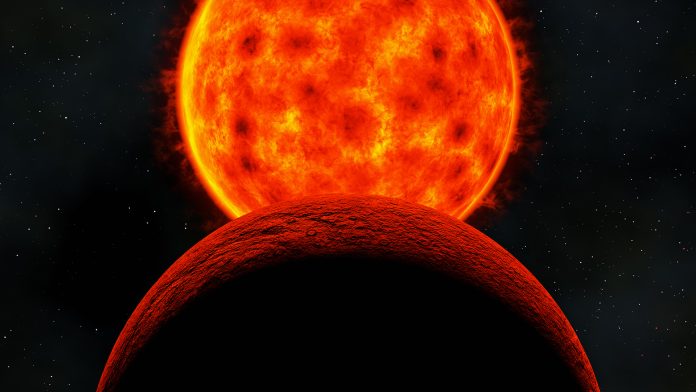A team of international scientists has measured the tiniest starquakes from an orange dwarf star.
The star, called Epsilon Indi, is the smallest and coolest dwarf star observed with solar-like oscillations, or starquakes, like those shown by the Sun.
These oscillations provide indirect glimpses of stellar interiors, just as earthquakes tell us about Earth’s interior. Because of this, they are important sources of information about stars.
The measurements were taken by an international team led by the Institute of Astrophysics and Space Sciences in Portugal.
The study is published in Astronomy and Astrophysics Letters.
Starquakes detected using asteroseismology
The team detected the starquakes using a technique called asteroseismology. This measures oscillations in stars.
Using the ESPRESSO spectrograph, the team recorded the oscillations with unprecedented precision.
Lead author Tiago Campante, of the Institute of Astrophysics and Space Sciences at the University of Porto, said: “The extreme precision level of these observations is an outstanding technological achievement.
“Importantly, this detection conclusively shows that precise asteroseismology is possible down to cool dwarfs with surface temperatures as low as 4,200°C, about 1,000°C cooler than the Sun’s surface, effectively opening up a new domain in observational astrophysics.”
Improving theoretical models of stars
Orange dwarf stars are a recent focus in the search for habitable planets.
Professor Bill Chaplin, Head of the School of Physics & Astronomy at Birmingham, and a member of the team, said: “The mismatch between the predicted and observed sizes of these stars has implications for finding planets around them.
“If we use the most successful planet-finding technique – the so-called transit method – we get the size of the planet relative to the size of the star; if we don’t size-up the star correctly, the same will be true of any small planet we have found.”
Detecting starquakes will help scientists to understand these discrepancies and improve the theoretical models of stars.
Future detections of orange dwarf oscillations
The detection of starquakes in Epsilon Indi will inform plans to use the upcoming European Space Agency’s PLATO Mission, scheduled to launch in 2026. This mission is set to detect oscillations in many more orange dwarfs.
PLATO will also search for planets around these stars.









